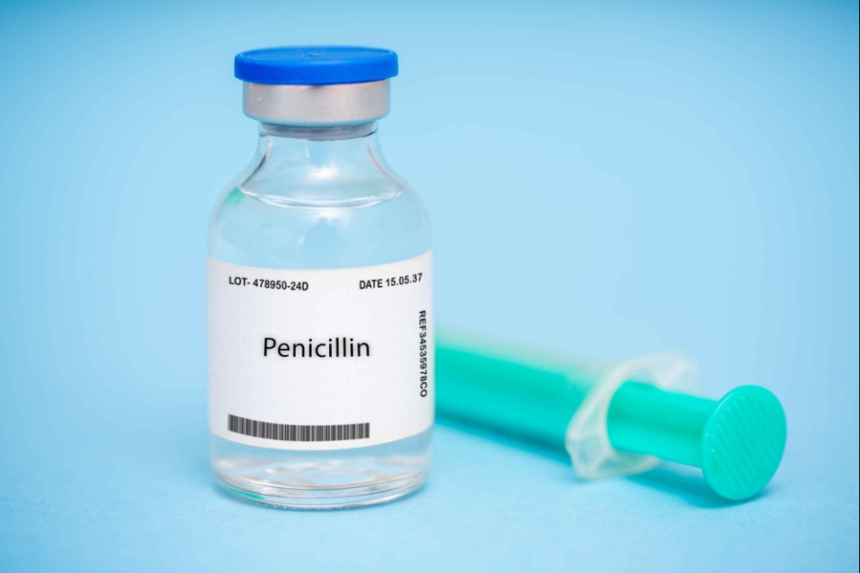Introduction:
Penicillin, a group of antibiotics derived from Penicillium molds has revolutionized medicine since its discovery in 1928 by Scottish scientist Alexander Fleming1. These remarkable drugs have saved countless lives by effectively treating bacterial infections. In this article, we delve into the history types and uses of penicillin while also addressing common questions.
The Basics:
What Is Penicillin?
Penicillin is a class of antibiotic medications that combat bacterial infections. It works by disrupting the cell walls of bacteria rendering them vulnerable to destruction. The two main purified compounds in clinical use are:
- Penicillin G: Administered intramuscularly or intravenously.
- Penicillin V: Taken orally.
- Historical Milestones
- Discovery: Alexander Fleming identified penicillin’s antibacterial properties in 1929, developing it as a life-saving drug.
- First Clinical Use: In 1930, Cecil George Paine successfully treated neonatal conjunctivitis with penicillin.
- Isolation and Purification: Howard Florey and Ernst Boris Chain isolated penicillin F in 1940, enabling broader clinical use.
Types of Penicillin:
- Penicillin G: Effective against staphylococci and streptococci.
- Semisynthetic Penicillins: These include antistaphylococcal aminopenicillins and antipseudomonal penicillins offering a broader spectrum of activity.
Common Side Effects of Penicillin:
- Nausea
- Vomiting
- Diarrhea
- Skin Rash
- Changes in Taste or Smell
- Headache
Antibiotic
The overuse of antibiotics including penicillin has significant implications for individual and public health. Let’s explore this:
Antibiotic Resistance:
- Problem: Overusing antibiotics promotes antibiotic resistance. When bacteria are exposed to antibiotics unnecessarily, they can resist the drug.
- How It Happens: Bacteria change in ways that protect them from the drug’s effects or limit their access to them. Some bacteria even alter or destroy the drug.
- Consequences: Antibiotic-resistant bacteria no longer respond to treatment making infections more challenging to manage.
- Incorrect Use:
Example: Taking antibiotics for viral infections (like colds, flu, or most sore throats) is ineffective.
Result: Harmless bacteria in your body can become resistant due to incorrect treatment.
Advice: Always take antibiotics as prescribed by a healthcare professional.
Public Health Impact:
Antibiotic Overuse: About one-third of antibiotic use in people is unnecessary or inappropriate.
Loss of Treatment Options: Overuse decreases effective antibiotics limiting our ability to combat infections.
Responsible antibiotic use is crucial to preserve their effectiveness and prevent the rise of antibiotic-resistant bacteria.
Allergic Reactions:
Penicillin can trigger hypersensitivity reactions including fatal anaphylaxis. If you experience any unusual symptoms seek medical attention promptly.
Other Reported Side Effects:
- Vaginal Itching and Discharge
- Black Hairy Tongue or White Patches in Mouth or on Tongue
Remember that individual responses can vary and it’s essential to consult your healthcare provider if you have concerns about penicillin.
FAQs
How Does Penicillin Work?
Penicillin disrupts bacterial cell walls, causing their destruction.
Is Penicillin Safe for Allergic Individuals?
While 10% of the population claims penicillin allergies, most can eventually tolerate it after avoidance.
Can I Take Cephalosporins if I’m Allergic to Penicillin?
Yes, cross-reactivity is minimal (only 3%).
What’s the Source of Penicillin?
Penicillium chrysogenum, a fungus produces penicillin.
Why Was It Named ‘Penicillin’?
Alexander Fleming coined the term referring to the mold’s scientific name.
Conclusion:
Penicillin remains a cornerstone of modern medicine, shaping the treatment of bacterial infections. As we explore new frontiers let’s appreciate the enduring impact of this remarkable discovery: What other medical breakthroughs might lie ahead?



